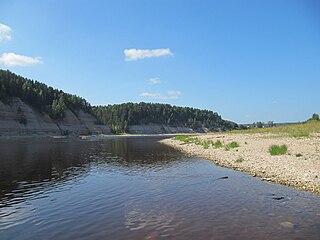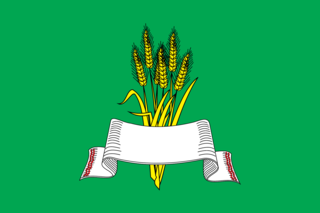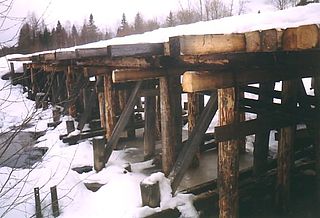Coordinates: 59°35′20″N39°37′20″E / 59.58889°N 39.62222°E

A geographic coordinate system is a coordinate system that enables every location on Earth to be specified by a set of numbers, letters or symbols. The coordinates are often chosen such that one of the numbers represents a vertical position and two or three of the numbers represent a horizontal position; alternatively, a geographic position may be expressed in a combined three-dimensional Cartesian vector. A common choice of coordinates is latitude, longitude and elevation. To specify a location on a plane requires a map projection.
| Kubena | |
|---|---|
 | |
| Native name | Russian: Кубена |
| Country | Russia |
| Physical characteristics | |
| Main source | Konosha heights |
| River mouth | Lake Kubenskoye 110 m (360 ft) |
| Length | 368 km (229 mi) [1] |
| Discharge |
|
| Basin features | |
| Basin size | 11,000 km2 (4,200 sq mi) [1] |

The Kubena (Russian : Кубена) is a river in Konoshsky District of Arkhangelsk Oblast and Vozhegodsky, Syamzhensky, Kharovsky, Sokolsky, and Ust-Kubinsky Districts of Vologda Oblast in Russia. It is 368 kilometres (229 mi) long, and the area of its basin 11,000 square kilometres (4,200 sq mi). The Kubena is the principal tributary of Lake Kubenskoye and belongs to the basins of the Sukhona River and the White Sea. Its main tributaries are the Syamzhena River (left) and the Sit River (right).

Russian is an East Slavic language, which is official in the Russian Federation, Belarus, Kazakhstan and Kyrgyzstan, as well as being widely used throughout Eastern Europe, the Baltic states, the Caucasus and Central Asia. It was the de facto language of the Soviet Union until its dissolution on 25 December 1991. Although nearly three decades have passed since the breakup of the Soviet Union, Russian is used in official capacity or in public life in all the post-Soviet nation-states, as well as in Israel and Mongolia.
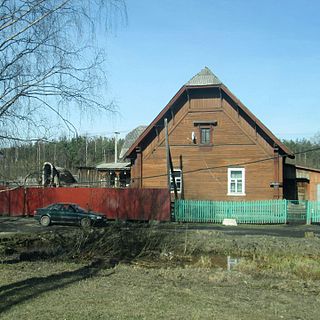
Konoshsky District is an administrative district (raion), one of the twenty-one in Arkhangelsk Oblast, Russia. As a municipal division, it is incorporated as Konoshsky Municipal District. It is located in the southwest of the oblast and borders with Nyandomsky District in the north, Velsky District in the east, Verkhovazhsky, Vozhegodsky, and Kirillovsky Districts of Vologda Oblast in the south, and with Kargopolsky District in the west. The area of the district is 8,500 square kilometers (3,300 sq mi). Its administrative center is the urban locality of Konosha. Population: 26,106 (2010 Census); 31,067 (2002 Census); 42,136 (1989 Census). The population of Konosha accounts for 47.6% of the district's total population.

Arkhangelsk Oblast is a federal subject of Russia. It includes the Arctic archipelagos of Franz Josef Land and Novaya Zemlya, as well as the Solovetsky Islands in the White Sea. Arkhangelsk Oblast also has administrative jurisdiction over Nenets Autonomous Okrug. Including Nenetsia, Arkhangelsk Oblast has an area of 587,400 km2. Its population was 1,227,626 as of the 2010 Census.
The town of Kharovsk is situated on the left bank of the river. The selo of Ustye, Ust-Kubinsky District, Vologda Oblast, and administrative center of Ust-Kubinsky District, is located in the mouth of the Kubena.
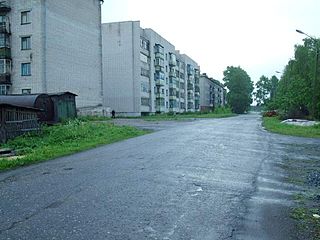
Kharovsk is a town and the administrative center of Kharovsky District in Vologda Oblast, Russia, located on the left bank of the Kubena River, 90 kilometers (56 mi) north of Vologda, the administrative center of the oblast. Population: 10,079 (2010 Census); 11,460 (2002 Census); 13,083 (1989 Census).
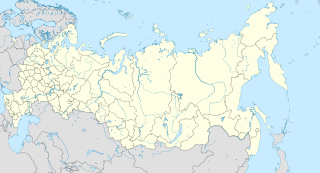
Ustye, also known as Ustye-Kubenskoye (Устье-Кубенское), is a rural locality and the administrative center of Ust-Kubinsky District of Vologda Oblast, Russia, located on the banks of the Kubena River close to its confluence with Lake Kubenskoye. It also serves as the administrative center of Ustyansky Selsoviet, one of the ten selsoviets into which the district is administratively divided. Municipally, it is the administrative center of Ustyanskoye Rural Settlement. Until 2004, Ustye had urban-type settlement status. Population: 3,938 (2010 Census); 4,148 (2002 Census); 4,534 (1989 Census).
The river basin of the Kubena comprises vast areas in the canter of Vologda Oblast and in the south of Arkhangelsk oblast and separates the river basing of the Onega River in the west and the Vaga River in the east. Four district centers of Vologda Oblast, Syamzha, Kharovsk, and Ustye, are located in the basin of the Kubena.

The Onega is a river in Kargopolsky, Plesetsky, and Onezhsky Districts of Arkhangelsk Oblast in Russia. The Onega connects Lake Lacha with the Onega Bay in the White Sea southwest of Arkhangelsk, flowing in the northern direction. The discharge at the source is 74.1 cubic metres per second (2,620 cu ft/s) and at the mouth is 505 cubic metres per second (17,800 cu ft/s). The river is 416 kilometres (258 mi) long, and the area of its basin 56,900 square kilometres (22,000 sq mi). Its main tributaries are the Voloshka (right), the Kena (left), the Mosha (right), the Kodina (right), and the Kozha (left). The major tributary of the Lake Lacha is the Svid.
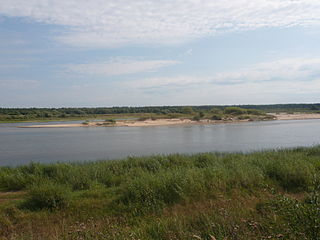
The Vaga is a river in Totemsky, Syamzhensky, and Verkhovazhsky Districts of Vologda Oblast and in Velsky, Shenkursky, and Vinogradovsky Districts of Arkhangelsk Oblast in Russia. It is a left and the biggest tributary of the Northern Dvina River. The length of the river is 575 kilometres (357 mi). The area of its basin 44,800 square kilometres (17,300 sq mi). The main tributaries of the Vaga River are the Pezhma (left), the Vel (left), the Kuloy (right), the Ustya (right), the Puya (left), and the Led (left).

Syamzha is a rural locality and the administrative center of Syamzhensky District of Vologda Oblast, Russia, located on both banks of the Syamzhena River, a tributary of the Kubena River. It also serves as the administrative center of Syamzhensky Selsoviet, one of the ten selsoviets into which the district is administratively divided. Municipally, it is the administrative center of Syamzhenskoye Rural Settlement. Population: 3,950 (2010 Census); 3,932 (2002 Census); 3,928 (1989 Census).
The source of the Kubena is located in the hills south of the settlement of Konosha. The river flows south, enters Vologda Oblast, turns northeast and crosses Vozhegodsky District, turning south, and eventually southwest. It accepts the Syamzhena from the left and turns west. Downstream of the town of Kharovsk the Kubena accepts the Sit from the right and eventually turns southwest. Exiting Kharovsky District, a stretch of the Kubena forms the border between Ust-Kubinsky District (right) and Sokolsky District (left). Further the Kubena enters Ust-Kubinsky district and empties into Lake Kubenskoye, forming a river delta.

Konosha is an urban locality and the administrative center of Konoshsky District, Arkhangelsk Oblast, Russia, located on the Konosha River, 400 kilometers (250 mi) south of Arkhangelsk. It also serves as the administrative center of Danilovsky Selsoviet, one of the ten selsoviets into which the district is administratively divided. Municipally, it is incorporated as Konoshskoye Urban Settlement. Population: 12,432 (2010 Census); 12,873 (2002 Census); 17,143 (1989 Census).
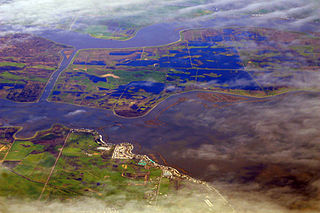
A river delta is a landform that forms from deposition of sediment that is carried by a river as the flow leaves its mouth and enters slower-moving or stagnant water. This occurs where a river enters an ocean, sea, estuary, lake, reservoir, or another river that cannot carry away the supplied sediment. The size and shape of a delta is controlled by the balance between watershed processes that supply sediment, and receiving basin processes that redistribute, sequester, and export that sediment. The size, geometry, and location of the receiving basin also plays an important role in delta evolution. River deltas are important in human civilization, as they are major agricultural production centers and population centers. They can provide coastline defense and can impact drinking water supply. They are also ecologically important, with different species' assemblages depending on their landscape position.
The lowest stretch of the Kubena of the length of 21 kilometres (13 mi) is listed in State Water Register of Russia as navigable, however, there is no passenger navigation.

